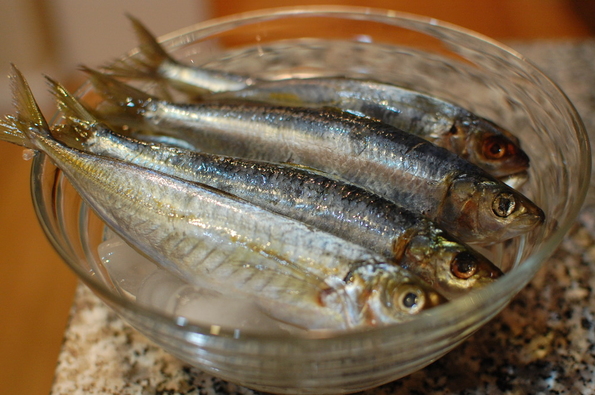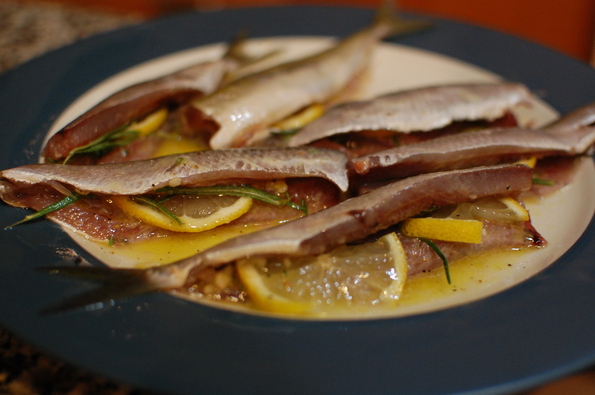I cook a lot of different foods from a lot of different cultures. I’ve made paneer cheese for saag paneer, stuffed sausage for brats, and cleaned squid for grilled calamari. However, up until very recently, I’d never cooked a whole fish from start to finish. Something about the process of cleaning, preparing and figuring out how to eat it always struck me as something to leave to the pros.
One of my recent go-to favorites is sardines. Unfortunately, many people have an instant negative reaction to sardines — they think of the smelly cans of fishy-tasting fillets that are usually considered low-class food. I sprinkle some herbes de provence, pepper, olive oil and lemon juice and then broil them for a few minutes. Voila! A delicious, healthy and very sustainable food devoid of any fishiness or negative stereotypes (if something called “herbes de provence” doesn’t elevate the status of sardines, I don’t know what will — I don’t have anything in my spice rack with a more pretentious name :-).
With the canned variety under my belt, the next step was fresh. Several recipes caught my eye, and the glimmering pile of fresh sardines at my local fish market seem to beckon to me. I went there once or twice, resolute on picking up a batch, but wimped out. Finally, a day off of work and a determination to conquer whole fish brought me back to the market, bag in hand. Not even the fish market’s refusal to clean fish that small could break my spirit; I bought 8, and brought them home, ready to do some gutting.
The gutting and scaling, while not hard, is relatively time consuming. There are a ton of videos and guides online for gutting sardines, so I won’t bore you with the details. The one thing I’d recommend very strongly is to avoid the sardines that have a rough spine-like bone along the side of the tail (you can see this “spine” in the front fish in the top photo). They are typically yellow around the edges. These are much, much harder to clean due to their bone structure.
After the cleaning, I was left with 5 decent sized fillets ready for the broiler (I basically had to discard the yellow bony ones). I layered the insides with fresh lemon slices and drizzled a mixture of olive oil, herbes de provence, salt and pepper inside and out. They then went under the broiler for about 10 minutes, until the outside skin started to brown.
The verdict? Not bad, but not all that much better than the canned ones. Given the amount of work that went into the prep, I’ll be sticking with Brunswick canned sardines from now on. The bright side of the endeavor is that I’m now no longer hesitant to make whole fish — I’ve done the hardest ones.

